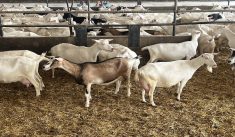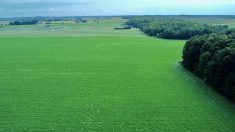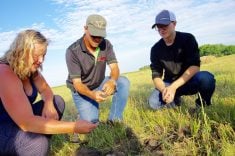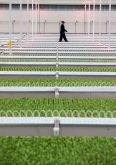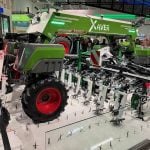There are three critical priorities for Canada to achieve a national food brand that’s built on food safety, trust and sustainability, says Canada 2020.
The think tank recently released the results of a process that involved talking to 600 agriculture sector stakeholders about what was needed, said David McInnes, a senior fellow with Canada 2020.
Why it matters: In an increasingly challenging world for trade, building and marketing a brand for Canadian products is seen as a critical differentiator.
Read Also
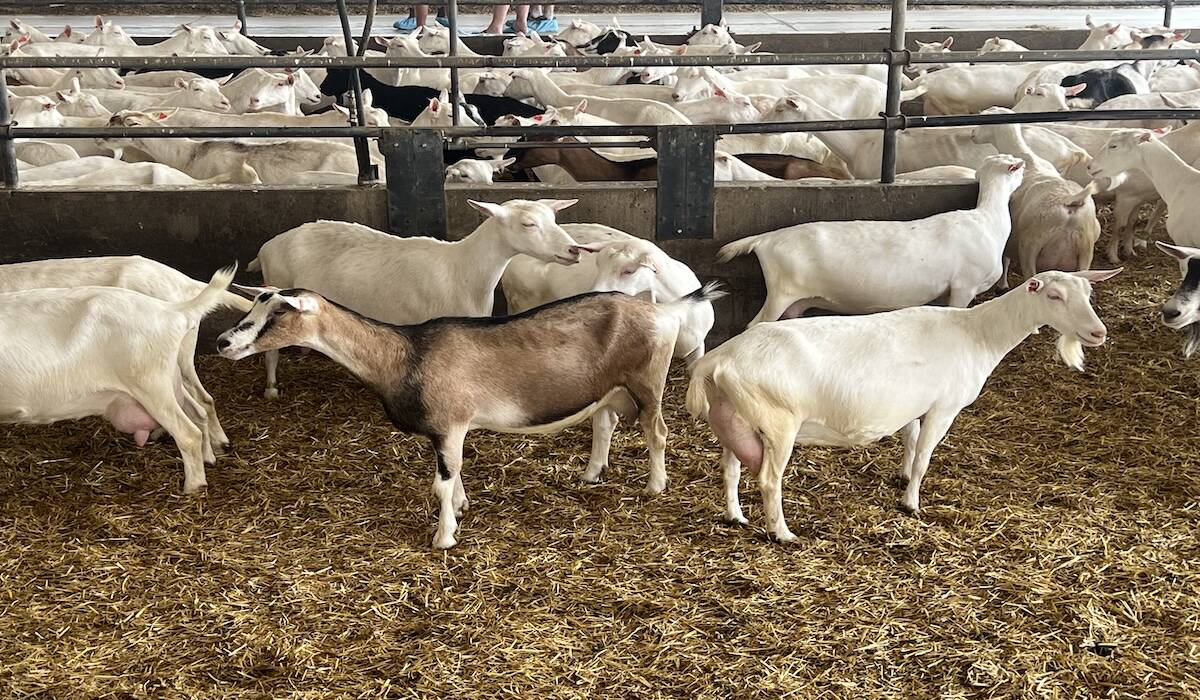
Ontario dairy goat producers move toward forming provincial board
Creation of a Dairy Goat Board under the Ontario Farm Products Marketing Commission may be voted on by early 2026.
McInnes and a panel of people from the sector discussed at the recent Arrell Food Summit how success with the Canada brand might be achieved.
The Arrell Food Institute is based at the University of Guelph and hosted the summit in Toronto.
The Canada brand has been talked about for several years, driven by the idea that Canada’s food safety, cleaner environment and trust from buyers and other countries can be used to market more agriculture products.
However, some, like former U.S. agriculture trade negotiator Darci Vetter, told the summit that other countries are also trying to use those same values in food and agriculture product marketing. The differentiation will be in the ability to prove them.
The Toronto skyline in the background in the floor to ceiling windows of the Globe and Mail building where the summit was held, was a reminder of a theme that ran through the discussion – that in order to grow the agriculture sector, there needs to be more outreach beyond traditional resources and an increase in diversity in agriculture.
Fittingly McInnes’ first critical priority was:
People
Emphasis on the need to find enough workers and new workers to bring new expertise to the sector was heard throughout the summit. John Stackhouse, a vice president at RBC and main evangelist for the bank’s Farmer 4.0 report, said technology will mean the need for more jobs, not fewer and called for more non-farm students to have placements within agriculture, whether they come from finance, engineering or medicine.
“We need more aggressive marketing to young Canadians and not just in agriculture. It’s like the moonshot for Canada, to feed the world in the 2020s,” he said.
McInnes says that organization and corporate boards of directors need more diversity – and that’s not just political correctness, it means bringing in different areas of expertise.
“We do not bring in enough people who represent enough interests,” he said, naming Indigenous, environment group, financial service and technology sector expertise as being needed.
“If we have the same discussion around the same tables, we’ll get the same answers,” he said.
The agriculture sector is not included in processes that could define global standards that will affect its future.
“The definition around sustainability and goals favours a view of sustainable agriculture and a vision that puts North American agriculture at a disadvantage,” McInnes says. The assumptions being made are not always rooted in good science, but if high production farming isn’t part of the discussion, then it will not have the result it would like to see.
Metrics
The agriculture sector can claim Canadian food is safer, trusted and sustainable but it doesn’t have data to back that up.McInnes called for a new national data strategy to support better data for on-farm decisions, and to satisfy public reporting. That data can also help measure national agriculture system performance, both from a financial and environmental impact perspective. Matching those indices against others around the world can help support claims.
“Data and metrics start at the ground level, at the farm level,” says McInnes. “Dairy folks are having good work done,” beef and crops data is being created, but “we don’t have a consolidated picture.”
Policy
There needs to be a change in how policy is made, with more solutions found by the industry, instead of having to wait on government and its black and white interpretation of solutions.
McInnes says science changes the need for regulation quickly and governments are slow to keep up.
More efficient regulation is not only important for farmers, but also to make Canada a “reliable place to attract and retain investment. How do we link a much more streamlined regulatory process to how we’re managing climate change to provide a safe haven for investors? This is a super sector.”
Agrifood risks around the world, like climate change, can be Canada’s opportunity, he said.
McInnes and his panel members discussed the three priority areas as part of a debate on the barriers to the adoption of the Canada brand.
Deborah Wilson, chief industry engagement officer and senior vice president with TrustBIX Inc., a company that helps supply chains manage their data, was also involved in the development of the process that resulted in the Canadian Roundtable for Sustainable Beef, in which McDonald’s pushed for the development of a standard for sustainable beef.
People in the beef sector came together “as we’ve been the poster child and whipping post for everything wrong in agriculture. It was important to come back with good stories and have a dialogue with diverse groups,” she said.
“We had to sit down and be willing to talk out our differences. There were days I thought we’d never agree, but it was worth it every step of the way. We are the only country in the world that delivers sustainable beef to the market. There’s not another country in the world that does that.”
She called for farmers to get out of their own ways – meaning that history, tradition and preconceptions can limit opportunity.
Michael Graydon, CEO of Food and Consumer Products of Canada, which represents manufacturers, says that he’s never worked in an industry as polarized as the agriculture sector.
“We have such an incredible opportunity with agri-food in this country to leverage it and fight above our weight. We have to collaborate and share information and have our competitive nature go away a bit.”
He said he has seen a change in his organization’s members over the past three years.
“We’ve worked very hard to engage with the agriculture community and break down barriers. Dialogue is taking a different tone than it has before,” he said.
See canada2020.ca/canadafoodbrand for more information.






